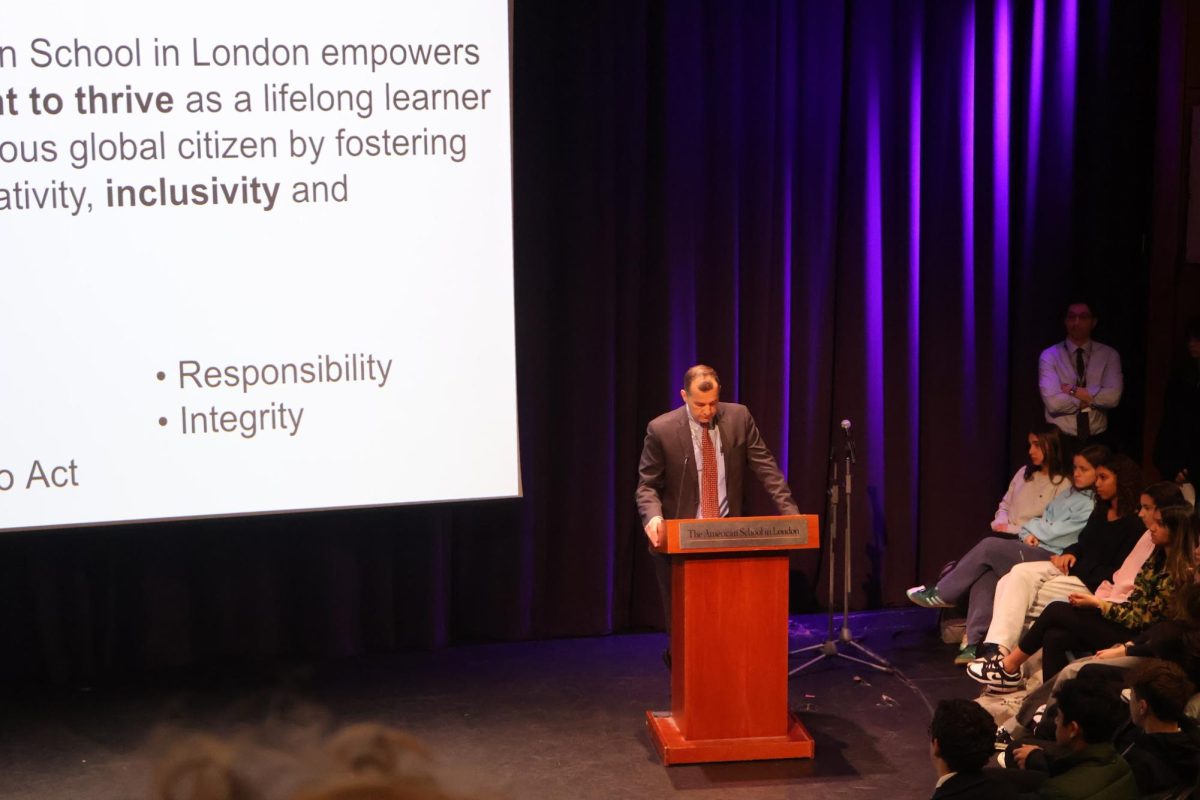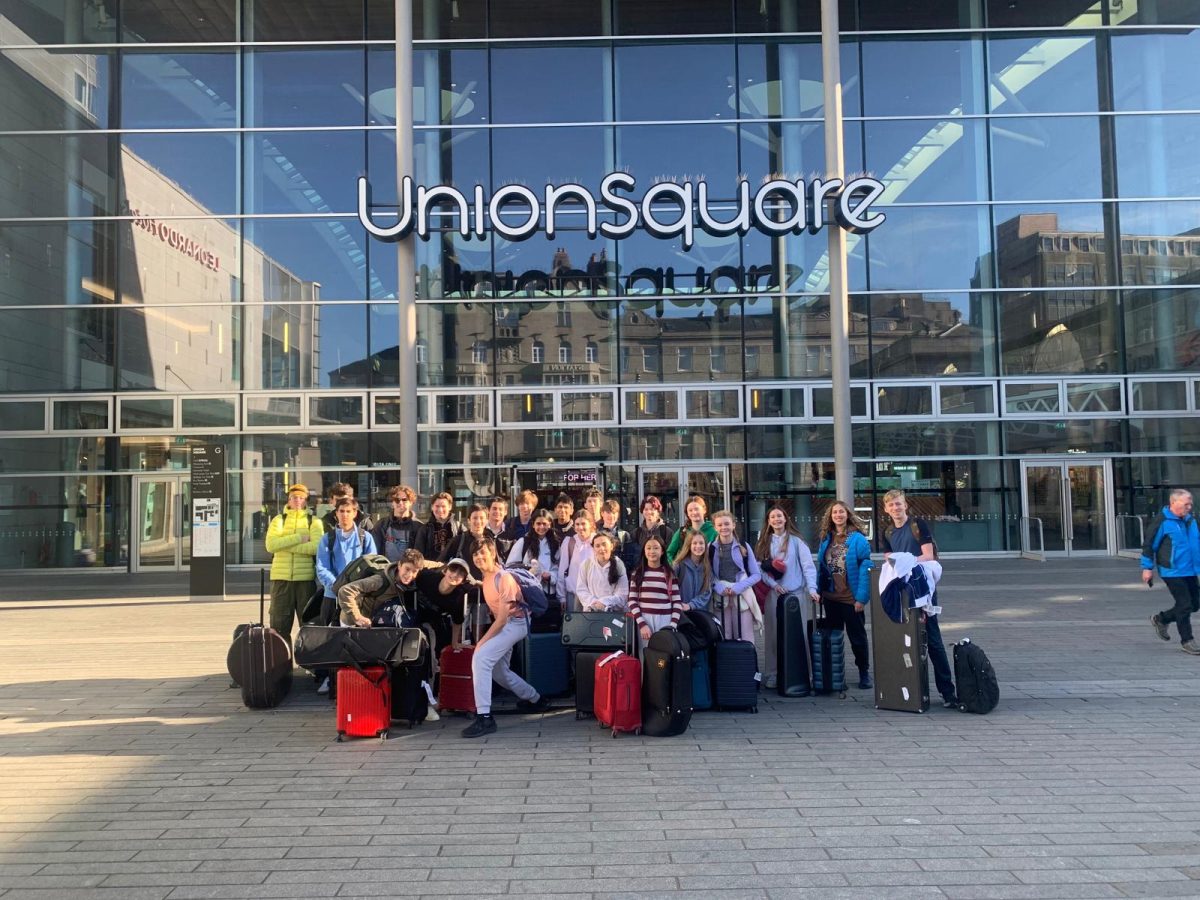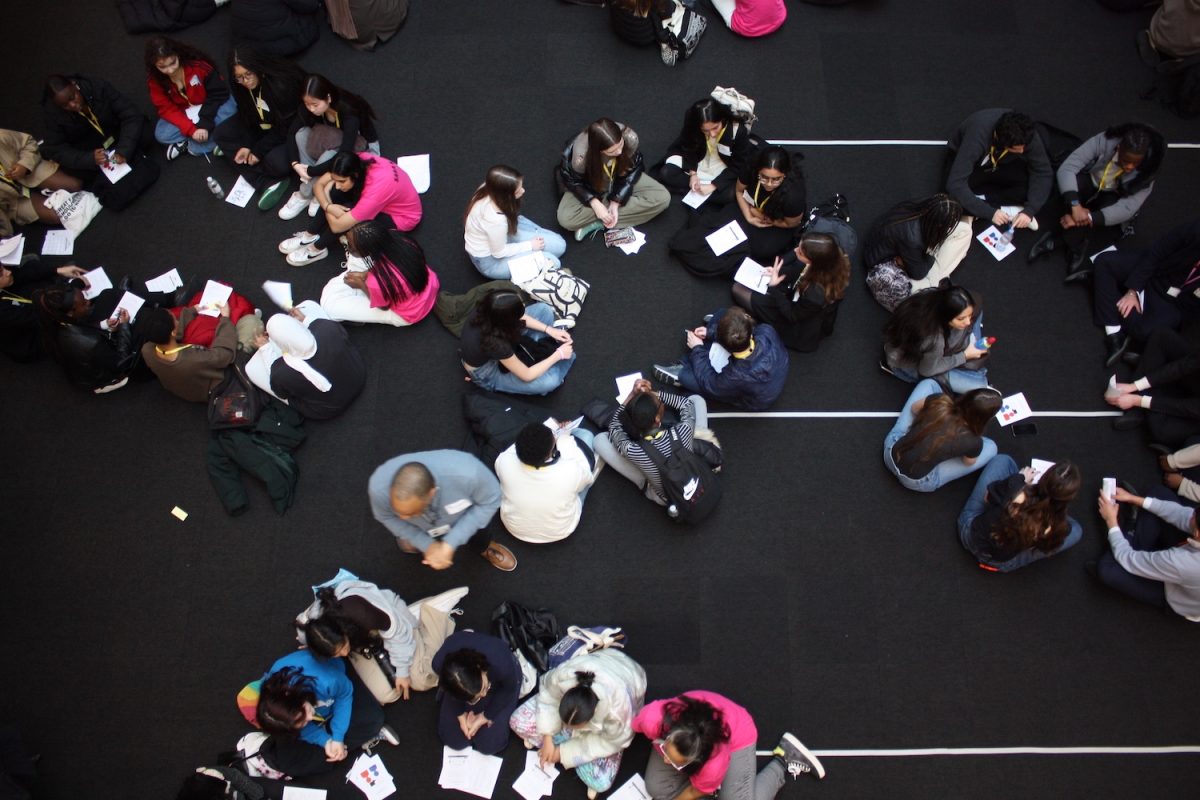GABRIEL RUIMY CULTURE EDITOR and CHARLOTTE YOUNG NEWS EDITOR
The catastrophe was so consequential that news outlets, around the world, had their front pages dedicated to the archipelago nation’s disaster. With winds up to 235 miles per hour and waves as high as 13 feet, Typhoon Haiyan left 1.9 million Filipinos homeless, and around 6,000 dead. The ramifications of the disaster were felt around the world, including within the ASL community.
Driven to help the devastated Philippines, students have been involved in relief efforts. Erik Hess (’14) who was inspired to reach out to the Filipino community after his housekeeper’s home in the Philippines lost its roof to Haiyan.,believed that a bake sale would be a successful way to raise funds. In total, Hess along with the help of other students raised over £450. ASL, too, took part in the relief effort. After communicating with the International School of Manila, ASL decided to give all money raised to United Nations Childrens Fund (UNICEF), as infrastructure already in place facilitated the unobstructed delivery of vaccinations, water, and shelter to the Filipino community.
MS Science Teacher Belle Hayward was born in the Philippines, but moved to Canada when she was nearly two. Although having only lived in the Philippines for a short period of time, Hayward still has deep connections to the islands, including family members and close friends living there. When she first heard of the news of the typhoon, she became anxious, scouring news websites and trying to get in touch with family and friends in the Philippines. Information took as long as a week to receive. “The hardest part was that the communication was difficult. There were no phone lines, no internet [in the Philippines] so immediate contact was very difficult,” she said.
Looking at the typhoon’s direct damage, Hayward notes a significant problem in the lack of infrastructure and resources the Philippines would need to cope with reconstruction. Because countries like the Philippines experience typhoons five to six times in a year, the materials used for housing are rarely sturdy. “Unfortunately, materials are the reason why a lot of the destruction happens: The destruction that is seen on TV. A lot of [houses] were built from wood; they were not stable,” she said.
K-12 Service Learning Coordinator Tamatha Bibbo helped to educate students of all grades on Haiyan, as well as set up relief efforts around the school. “We always look for ways to aid other than money, but at this point that’s what they need. They need money back into their economy,” Bibbo said. Bibbo thinks students at ASL have the incentive to help the Philippines because of our nature as an international school. “When you’re international, you might not be connected so closely with the local schools, but the international schools all feel a personal connection because this is something that could happen to them and they would like to know that there is going to be a support network and a support group to help them out,” she said.
A tropical storm, otherwise known as a cyclone, occurs when warm water (around 27 degrees C) goes to a depth of 50 meters or so in a windy environment, Science Teacher and Grade 10 Dean Marisa Wilson explains. Warm, low pressure air begins to rise from the water, and rapidly cold, high-pressure air fills the void. Then, because of the rotation of the earth, “[the wind] starts spinning. That’s your storm.”
The Philippines’ climate provides conditions that make typhoons common. About 30 degrees north of the equator, westward winds are prominent, and the summer season of July to August provides the warm water. As a result, typhoons occur frequently in and around the area, much like how the southeastern section of the United States receives hurricane after hurricane.
“What makes the Philippines particularly vulnerable is the fact that you have an island that has tons of people on it,” Wilson said. This means that the storm can strike more densely populated areas.
This increased population makes the situation worse, “The people drain groundwater, water below the surface. What ends up happening is – because people are tapping into the groundwater so much, with wells and what not – the land is actually getting lower,” Wilson said. The more people draining groundwater, the quicker the island’s grand level decreases.
Unfortunately for the Philippines, that is not all. Water levels have been rising as a result of aquatic pile-up. Westward winds push the water in the same direction, up until it touches land, where the natural obstruction causes the water level to rise.
Discussing why these fluctuations seemed to suspiciously coincide, Wilson said, “[Rise of waters] is the piece people most usually link to climate change, the typhoon was particularly destructive because of the higher water.
“Scientists have said that we are having more intense storms, events like [Haiyan], as a result of climate change. The number, though, not necessarily.”
While typhoons wreck communities and nations through loss of life, they also create larger problems for the country affected. The four-figured casualty numbers pressed President Benigno Aquino to declare a state of national calamity on November 1, but other factors have only compounded the crisis. On December 1,
23 days after Haiyan hit, Bloomberg, a leading finance and business market news outlet, stated that the Philippines budget deficit was only two percent of Gross Domestic Product (GDP) – something that could have dissipated previous fears of economic woe.
Unfortunately, the GDP deficit is not a great indicator of damage. “GDP calculations, on a good day, are a close guess,” Social Studies Teacher Howie Powers explained. “So when it’s a situation like the one Philippines finds itself [in] today, it’s very hard to say.”
To calculate the actual devastation of the typhoon, the government would have to run a ground report, or look at insurance claims. “I doubt people in a developing nation like the Philippines have comprehensive insurance on property and businesses,” Powers said.
Optimism is not lost, though. The Philippines’ economy – like in most disaster-struck nations – initially experienced a slump, which was soon followed by a boom in productivity that eventually balances it out to pre-disaster levels.Just as experienced with Hurricane Sandy (a category 3 storm that began in the Caribbean and went on to scale the U.S. Atlantic coastline), the government and other nongovernmental organizations (NGOs) start investing in the affected area. In the Philippines for example, “[An NGO] will all of sudden need to hire 80 Filipinos, say, to clean up a road, or man a food distribution center,” Powers said.
Foreign and governmental investment allows for the economic recovery to move forward at a pace the day-to-day day economy would not. Aid today doesn’t only come through governments. “NGOs are doing a great job and funding is often channeled through them,” Powers said. Is it because of possible government corruption in developing countries? “Corruption is not always present in developing countries, though it can be, and sometimes funds make an impact or sometimes they don’t.” Is that why NGOs are usually used to channel foreign financial aid? “NGOs are great because of two reasons: They have experience at working on situations like this, they bounce from disaster to disaster, and they have less corruption [than governments], but they still have some corruption.”
The other major form of aid, Powers explained, is donations from other governments. The Guardian, a U.K. newspaper, reported that the U.S. pledged $20 million and also provided on-ground, military-driven support.
China, despite having the world’s second largest economy, has pledged only $2 million to the Philippines, a figure outdone by Swedish furniture store Ikea – who gave $2.7 million to the archipelago nation.
Governmental aid, though, is not always completely humanitarian. “Some governmental aid can be altruistic and some egotistic. There can be a genuine desire to help, but it should also be kept in mind that the Philippines is a strategic position in the Pacific [Ocean] for global powers,” Powers said.
However, “loss of property is replaceable, loss of life, though, isn’t,” Powers said.
gabriel_ruimy@asl.org
charlotte_young@asl.org






